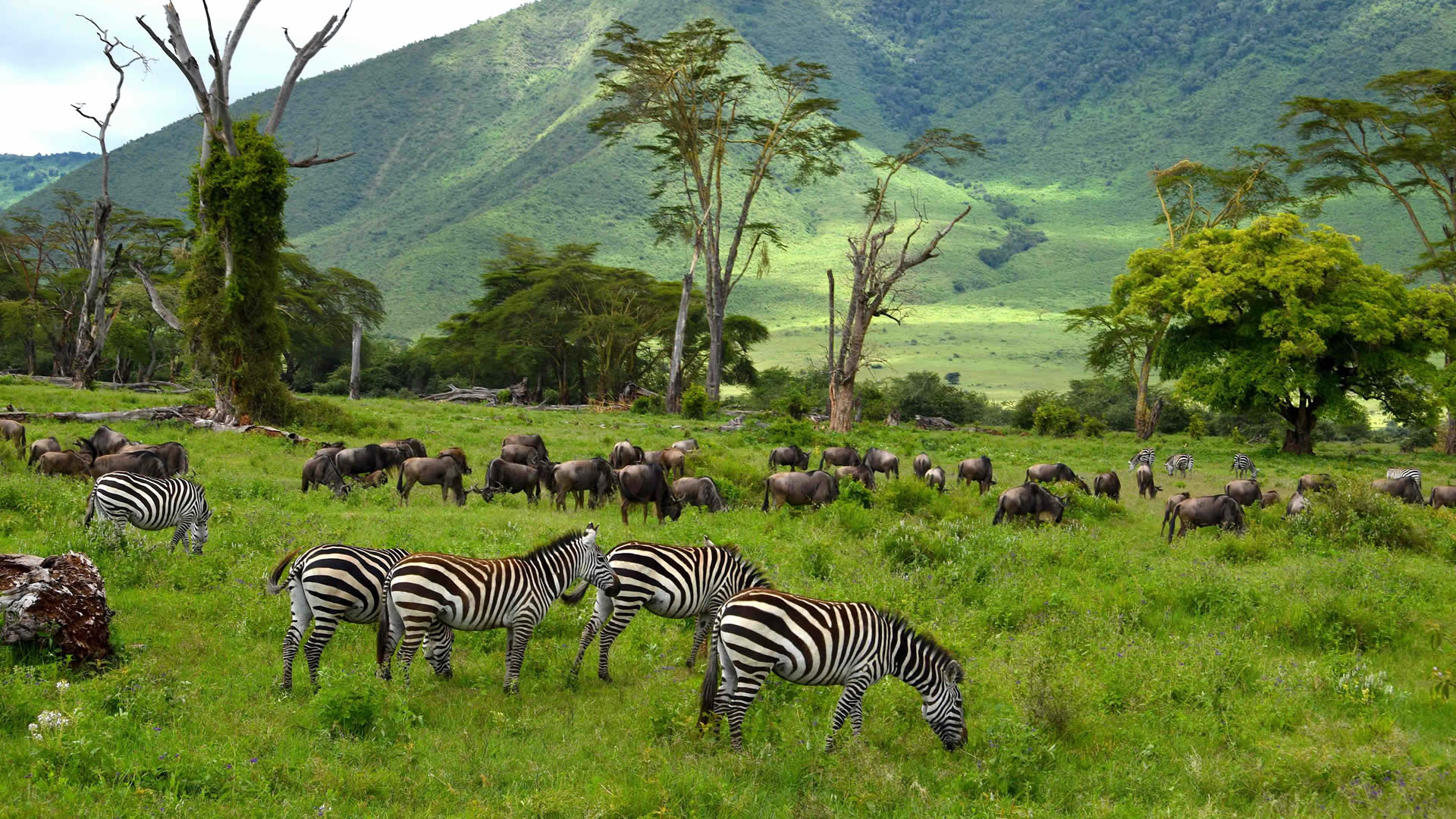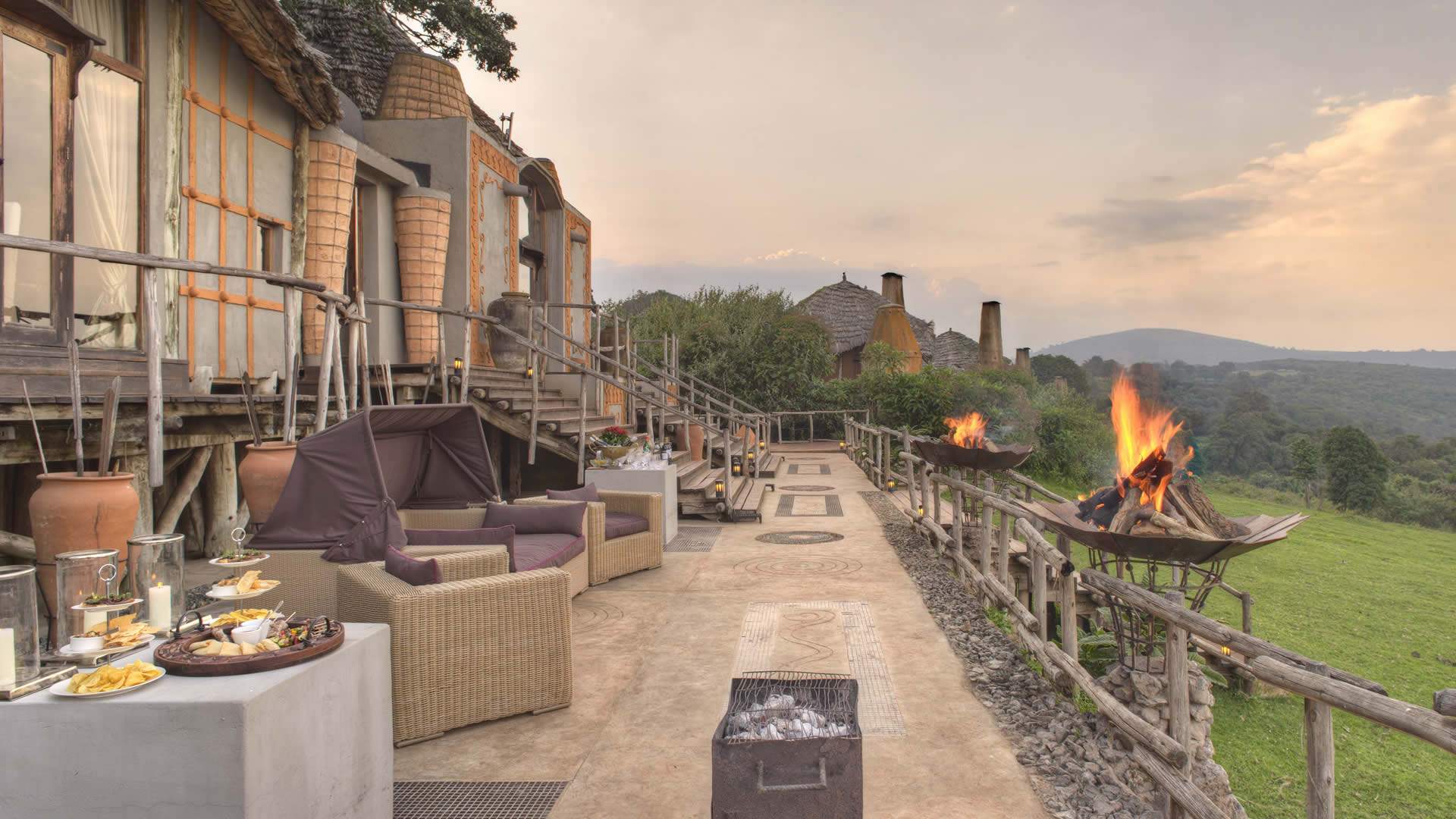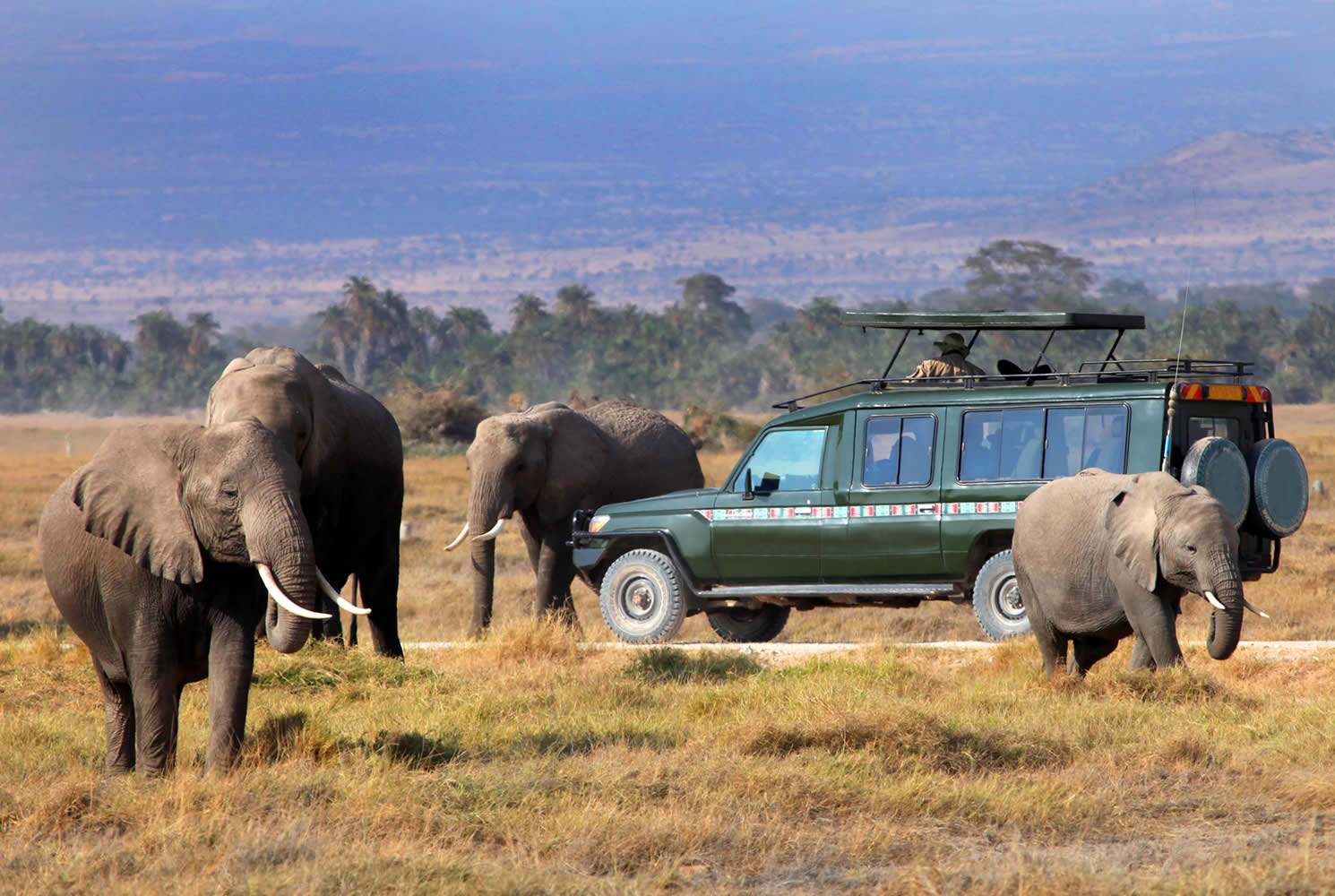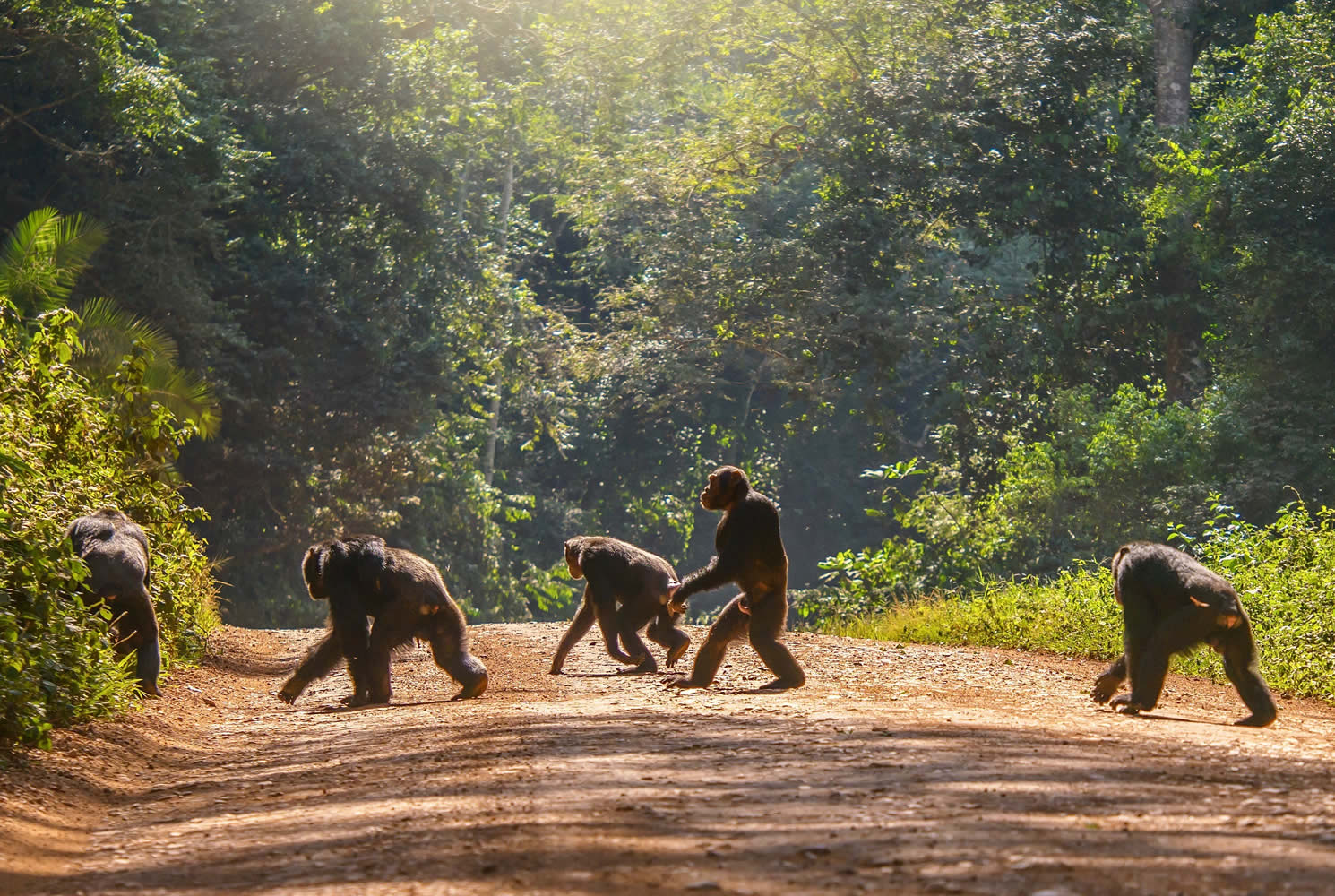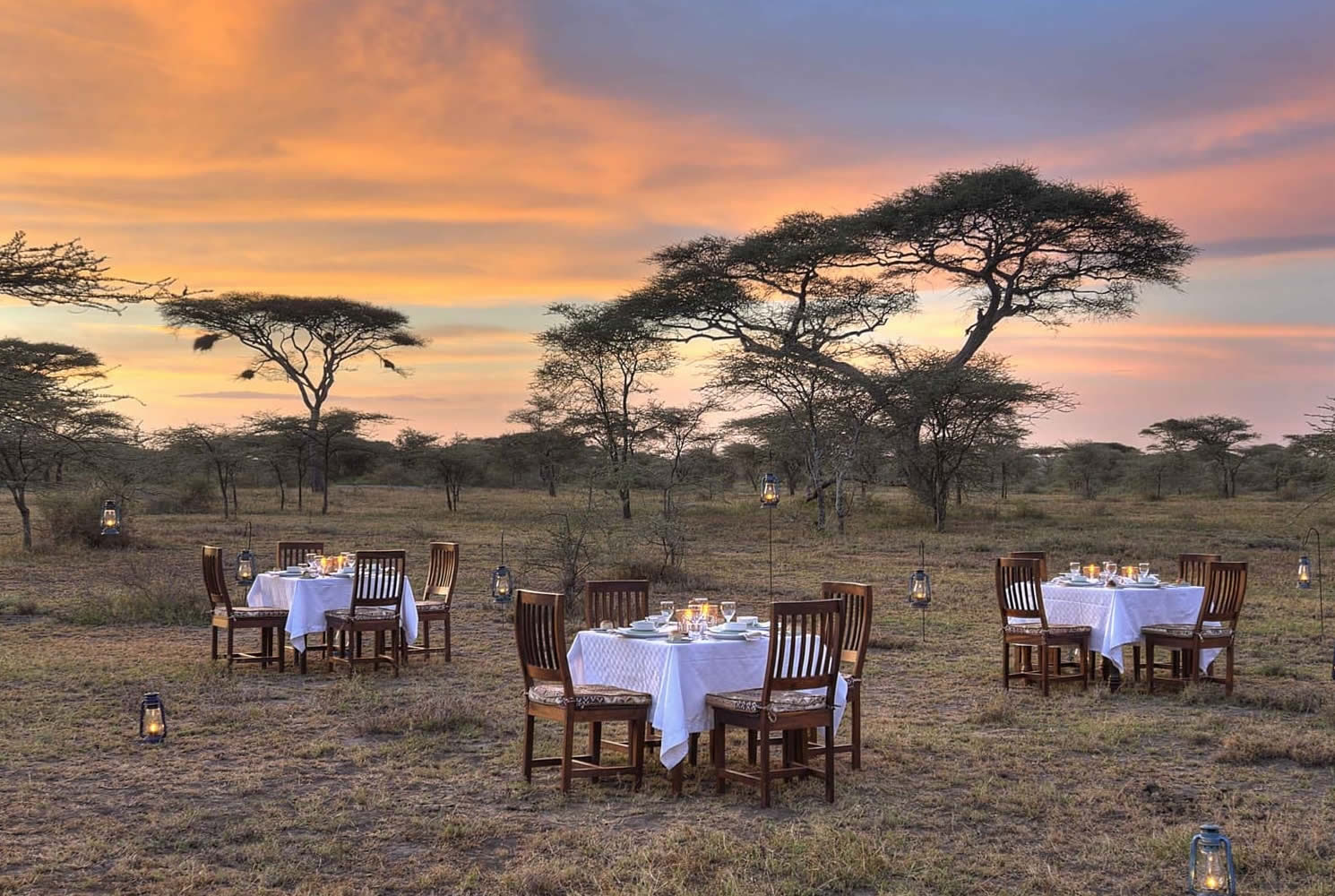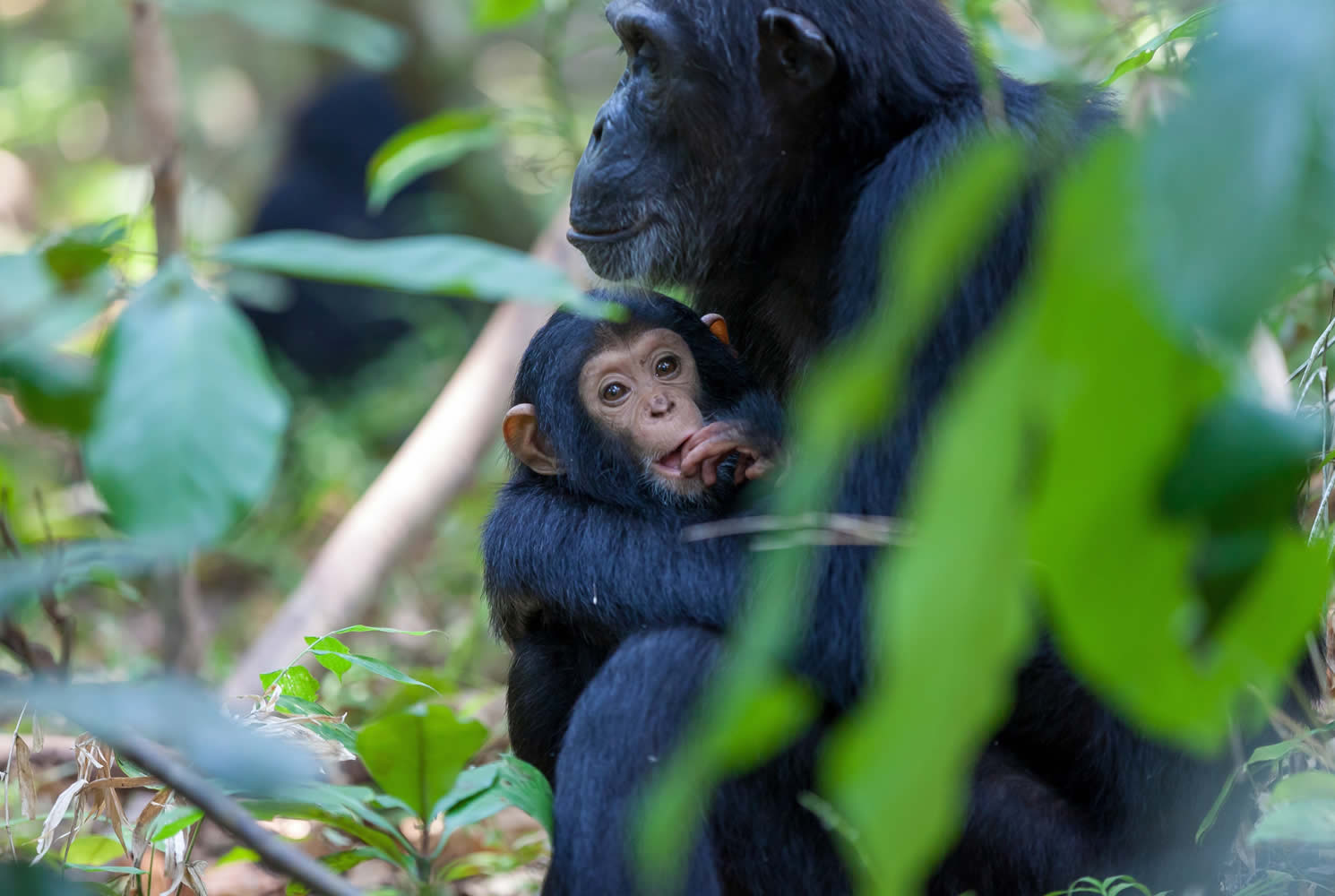Ngorongoro Conservation Area
The Ngorongoro Conservation Area (NCA) covers some 8,300 sq km. It boasts the finest blend of landscapes, wildlife, people and archaeological sites in Africa. It is also a pioneering experiment in multiple land use. The concept of multiple land use in conservation perspective is a deviation from a traditional approach of regarding conservation as complete absenteeism of human interference.
Nngorongoro Crater is the world’s largest intact volcanic caldera. Forming a spectacular bowl of about 265 square kilometres, with sides up to 600 metres deep; it is home to approximately 30,000 animals at any one time. The Crater rim is over 2,200 metres high and experiences its own climate. From this high vantage point it is possible to make out the tiny shapes of animals making their way around the crater floor far below. Swathes of cloud hang around the rocky rim most days of the year and it’s one of the few places in Tanzania where it can get chilly at night.
The crater floor consists of a number of different habitats that include grassland, swamps, forests and Lake Makat (Maasai for ‘salt’) - a central soda lake filled by the Munge River. All these various environments attract wildlife to drink, wallow, graze, hide or climb. Although animals are free to move in and out of this contained environment, the rich volcanic soil, lush forests and spring source lakes on the crater floor (combined with fairly steep crater sides) tend to incline both grazers and predators to remain throughout the year.
Ngorongoro Crater is a large and unbroken volcanic caldera. It is one of the most spectacular safari destinations in Africa, with incredible scenery and game viewing. The crater is 610m deep and the floor is 260km squared.


